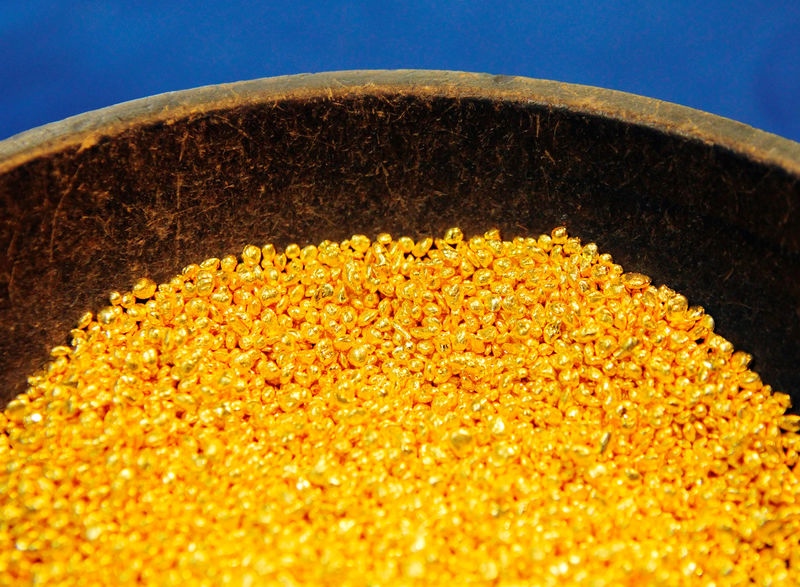Gold prices edge higher with focus on Ukraine-Russia, Jackson Hole
Investing.com--Gold prices fell Thursday, extending recent declines as a U.S.-Japan trade deal and batch of strong tech earnings boosted risk appetite and further sapped demand for havens.
At 05:00 ET (09:00 GMT), spot gold fell 0.5% to $3,369.40 an ounce, while gold futures fell 0.7% to $3,374.50/oz.
The yellow metal has reversed most of its gains made this week on Wednesday and Thursday, retreating from an over one-month high.
However, gold remains largely within the $200/oz trading range seen for most of this year as it struggled to retake record highs over $3,500/oz hit in April.
Gold, precious metals dip on trade optimism
Gold and broader precious metal prices were pressured by improving risk appetite, a trend kicked off largely by the U.S. and Japan agreeing to a trade deal earlier in the week. Japan will face 15% U.S. tariffs on its exports, lower than the 25% levy initially threatened by Trump.
The agreement raised hopes that Washington will clinch more trade deals before Trump’s August 1 deadline for higher tariffs against a swathe of major economies, with the European Union and India both seen as close to signing deals.
Risk appetite was also boosted by some positive tech-sector earnings, after Google owner Alphabet (NASDAQ:GOOGL) reported a stronger-than-expected second-quarter print on artificial intelligence-fueled demand.
Elsewhere, spot platinum fell 1.8% to $1,428.35/oz and silver fell 0.5% to $39.328/oz, with both metals also pulling back from gains made earlier this week.
Industrial metals benefited from improving risk.
Benchmark copper futures on the London Metal Exchange rose 0.1% to $9,932.85 a ton, while COMEX copper futures rose 1.3% to $5.8933 a pound. Both contracts were sitting on robust gains this week.
China H1 gold buying falls at slower pace
China’s gold consumption fell at a slower pace in the first half of 2025, as safe haven demand remained strong and partially offset softer jewellery demand.
Gold buying in the first six months of 2025 fell 3.5% year-on-year to 505.205 metric tons, compared to a 5.6% drop in the same period in 2024, data from China’s state-backed Gold Association showed.
The drop was driven chiefly by weaker jewellery demand, as consumers balked at higher bullion prices. But this was in part offset by strong institutional demand, as heightened trade and economic uncertainties saw investors buy more bullion.
China is among the largest consumers of gold in the world, with the People’s Bank also seen stockpiling on gold in recent months.
Ambar Warrick contributed to this article
